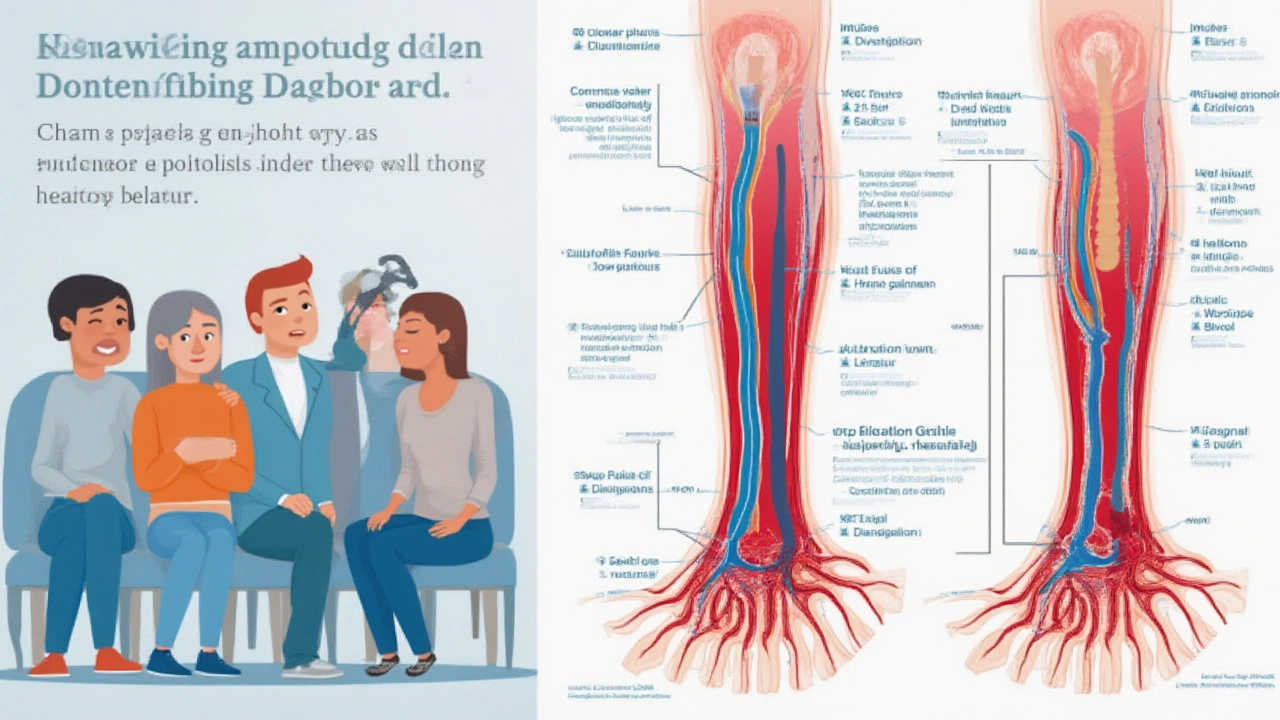Chronic Venous Insufficiency – What It Is and How to Feel Better
If your legs feel heavy, swell after a long walk, or you notice spider‑like veins, you might be dealing with chronic venous insufficiency (CVI). It’s a condition where the veins in your lower legs struggle to push blood back to the heart. The result? Blood pools, pressure builds, and the skin can get damaged over time.
What Triggers Chronic Venous Insufficiency?
Think of your veins as one‑way streets. Valves inside them act like gates, stopping blood from flowing backward. When those valves weaken or get damaged, blood leaks down‑stream and pools in the lower leg. Common culprits include:
- Age: Vein walls lose elasticity as you get older.
- Family history: If your parents had varicose veins, you’re more likely to develop CVI.
- Standing or sitting for long periods: Jobs that keep you on your feet or glued to a desk make the veins work harder.
- Pregnancy: Hormonal shifts and extra weight put extra stress on leg veins.
- Obesity: Extra weight adds pressure to the venous system.
The early signs are often easy to spot: swelling (edema) in the ankles, a feeling of tightness, or a burning sensation after standing. As CVI progresses, you may notice brownish skin discoloration, varicose veins, or even painful ulcers near the ankle.
Practical Ways to Ease the Discomfort
Good news: many everyday moves can slow down CVI and keep symptoms in check.
1. Move your legs. Short walks, calf raises, or simple ankle circles boost circulation. Even 5‑minute breaks every hour can prevent blood from sitting still.
2. Wear compression stockings. They apply gentle pressure, helping the valves push blood upward. Choose a level that feels snug but not painful – a medical‑grade fit works best.
3. Elevate your feet. When you’re sitting, prop your legs on a stool or pillow so they’re above heart level for 15‑20 minutes a few times a day.
4. Keep a healthy weight. Shedding excess pounds reduces the load on your veins. Combine a balanced diet with regular activity for the best effect.
5. Stay hydrated and avoid salty foods. Hydration keeps blood thin, while too much salt can make you retain fluid and worsen swelling.
If you’ve already got skin changes or ulcers, see a healthcare professional. Treatments may include laser therapy for varicose veins, prescription creams for ulcer care, or even minimally invasive procedures that close faulty valves.
Remember, CVI isn’t something you have to live with forever. Small, consistent habits can make a big difference in how your legs feel day to day. Start with simple steps, watch how your body responds, and adjust as needed. Your legs will thank you.
-
Chronic Venous Insufficiency & Embolism: What Really Connects Them?
Explore how embolism and chronic venous insufficiency connect, risk factors, stats, symptoms, and actionable steps to keep your veins healthy for life.
